Results 1,971 to 1,980 of 12094
Thread: Anandtech News
-
06-07-12, 12:00 AM #1971
Anandtech: Computex 2012: Some more FM2 Motherboards, including Zotac, ECS and Biosta
Having had a chance to visit most of the motherboard manufacturers in Computex so far, I popped from the Zotac booth into the AMD booth on my way to a meeting to see if anything was interesting. Luckily, there was - a wall of AMD motherboards, with quite a few for the upcoming FM2 chipset supporting Trinity processors.
It is important to note that most FM2 motherboards will ship with one of two Fusion Controller Hubs (FCH) - either A85X or A75. To add confusion to the mix, A75 can be used with both Llano and Piledriver, so some vendors will be using the A75 FCH but naming their boards as 'A85'. Other vendors will be using A85X chipset and also naming their boards as 'A85'. The differences between the two indicate that A85X has eight SATA 6 Gbps ports native compared to six on A75, and that A85X can support RAID 5 operation whereas A75 cannot.
Gallery: Computex 2012: Some more FM2 Motherboards, including Zotac, ECS and Biostar


More...
-
06-07-12, 05:30 AM #1972
Anandtech: ASUS Demonstrates Displays with Integrated Touch and WiDi
Years ago ASUS made the transition from being just a motherboard company to a notebook manufacturer. These days I'm getting the distinct impression ASUS would like to be much more than just a notebook company. It has been building everything from displays to routers for quite a while now, but ASUS is definitely ramping up its focus on all things peripheral to motherboards and systems.
At Computex we got a glimpse of two ASUS displays, one that brings integrated Intel Wireless Display (WiDi) technology (pictured above) and one that integrates touch. Although I wouldn't rely on WiDi as a primary interface for my display due to latency, it does make it easier to temporarily "connect" another machine to your display.
The touch enabled model is obviously aimed at Windows 8 and I expect to see more touch enabled desktop monitors as Windows 8 officially launches. I don't know that touch alone is a compelling feature for Windows 8, but it seems like it's going to quickly become a requirement as it really is a more convenient way to interact with the Metro UI.
Gallery: ASUS Demonstrates Displays with Integrated Touch and WiDi



More...
-
06-07-12, 05:30 AM #1973
Anandtech: ASUS' Colorful X401 Series
Priced below the S-series Ultrabooks is ASUS' X401, a fairly standard notebook without discrete graphics. ASUS seems to be really on point with the styling of its 2012 Ivy Bridge based notebook lineup. Pics and more details in the gallery below.
Gallery: ASUS' Colorful X401 Series




More...
-
06-07-12, 05:30 AM #1974
Anandtech: The MacBook Pro Inspired ASUS S-Series Ultrabook, Below $899
While the world waits for thinner, higher-resolution notebooks from Apple, ASUS delivered part of that with its new S-Series Ultrabooks revealed at Computex this year. Priced below $899 (basically covering the $699 - $849 range), the S-Series features an aluminum unibody construction, 21mm thickness, Ivy Bridge Core i3/5/7, and optional GeForce GT 630M. ASUS retains the integrated optical drive. The S-series will be available in both 14 and 15-inch versions, but limited to a display resolution of 1366 x 768. If you want a higher resolution, you'll have to look toward the more expensive Zenbook Prime.
At these price points solid state storage isn't exactly possible, but ASUS has outfitted these systems with a 24GB SSD cache in addition to the standard mechanical drive. Dimensions, additional specs and more shots can be found in the gallery below.
It is nice to see the Ultrabook trend having a positive impact on notebooks across many price points, although we do still need to see a serious revolution in PCs priced at or below $500.
Gallery: The MacBook Pro Inspired ASUS S-Series Ultrabook, Below $899





More...
-
06-07-12, 05:30 AM #1975
Anandtech: ASUS' Touch Enabled Zenbook Prime UX21A
Ultrabooks got off to a very rough start. The initial designs failed to impress, but the second generation based on Ivy Bridge seem to be a lot better. We noticed significant improvement in our review of the ultra high-resolution Zenbook Prime, but there's a new problem: Windows 8 is due out before the end of the year, and it will definitely work best with touch enabled tablet/hybrid-notebook solutions.
In anticipation of Windows 8, ASUS announced its Tablet series as well as the Ivy Bridge based Transformer Book. The Zenbook Prime isn't going to be left behind however, as ASUS introduced a touch enabled version of the 11-inch Zenbook Prime (UX21A) at Computex.
The specs are identical to the UX21A we previewed last month, just with a 10-finger touch enabled display. It's also nice to see that the poorly animated brightness controls from the Windows 7 software build are now gone and replaced with native looking widgets in Windows 8. These touches are really non-negotiable in the battle to keep users from migrating to Apple.
Availability of the Touch Enabled Zenbook Prime (and other ASUS Windows 8 systems) be timed to coincide with the Windows 8 launch, which at this point is expected to be sometime in late Q3 or early Q4.
Gallery: ASUS' Touch Enabled Zenbook Prime UX21A




More...
-
06-07-12, 06:00 AM #1976
Anandtech: QNAP's JTB-400: A BYOD 4-bay Thunderbolt Enclosure
Ahh, finally what I've been asking for: a 4-bay Thunderbolt enclosure that allows you to bring your own disks. I'm reserving excitement until I see just how much QNAP's JTB-400 is going to be, but for now I'm cautiously optimistic. The drive bays are hot swappable and can accommodate both 2.5" and 3.5" form factors. The chassis doesn't feature any hardware RAID controllers (Marvell is on SATA duty internally) so you'd have to rely on software RAID but it should be cheaper than Promise's Pegasus R4. The JTB-400's release is set for sometime in the next quarter.
Gallery: QNAP's JTB-400: A BYOD 4-bay Thunderbolt Enclosure


More...
-
06-07-12, 08:00 AM #1977
Anandtech: Netgear Introduces NeoTV Pro NTV200S WiDi and Media Streamer Combo
We have been closely following Netgear's efforts in the media streaming space since the NTV550 / NTV350 was launched almost two years ago. Around that timeframe, online media streaming services such as
Netflix, Hulu Plus and Vudu started to see explosive growth. With the rise of these premium streaming services, media streamers also moved to a IPTV STB (Set Top Box) model. The D-Link Boxee Box and the WDTV Streaming Media Player also paid attention to local media streaming, but came in with a price premium.
The star of the streaming media player space in 2011 was undoubtedly Roku. From Roku LT's $49 to Roku 2 XS's $99, they had models for every price point. Though we didn't find the value proposition at $99 to be good enough compared to the WDTV Live Streaming Media Player, their huge marketing push enabled them to sell more than a million of the Roku 2 players last year alone.
In December, we reviewed Netgear's answer to the Roku challenge, the NTV200 (It had launched in late September). Netgear's suggested MSRP was $79.99, but it was common to find it being sold for $49.99. This low price enabled them to sell around 200K units (similar to Boxee Box, but in a much shorter time frame).
At CES, we talked briefly with Netgear about their efforts in the media streaming space. It was indicated to me that Intel's WiDi would make its appearance as an app in the NTV200, and it would probably be a paid upgrade. I had also made a note of that in our CES coverage. We also talked about a model based on the NTV200, but with an added USB port. Today, Netgear is introducing the first of the two improvements. However, instead of an app, it has turned out to be a new unit called NeoTV Pro (NTV200S). The unit is priced at $69.99 and it available right now.
There is no hardware difference between the NTV200 and the NTV200S. The difference lies only in the software and the codec licensing. Upon receipt of the press release, I was quite upset as to why Netgear would want to make users buy a fresh unit just for this functionality. My impression was that Netgear could have just asked interested users to pony up $20 for the app and call it a day. Netgear explained that the necessity for a fresh unit had to do with codec licensing. In the rest of this piece, we will discuss the WiDi initiative, with emphasis on what Netgear has done till now.
Brief History of WiDi
Intel's Wireless Display initiative started in 2010 with the introduction of the Arrandale processors. It was intended as a technology to help connect a notebook to the TV or another display in a wireless manner. WiDi is available only if the WiFi adapter in the notebook belongs to the Centrino platform. The GPU drives a second virtual display (which is basically a clone of the current desktop) which is encoded and transferred through an ad-hoc wireless network (device to device) to the WiDi sink / receiver connected to the TV. Since Arrandale doesn't have QuickSync, the encoding had to be done in software. Maintaining HDCP or multi-channel audio or even 1080p resolution wasn't possible. Since there was not enough horsepower available for real-time low-latency H.264 encoding, the computationally easier MPEG-2 encoder was used. The encoded bitstream was sent over a device-to-device Wi-Fi connection for decide by the receiver connected to the display / receiver.
Netgear had an exclusive on the receiver side for one year. In that year, they started off with the Push2TV PTV1000 model priced at $129.99. In 2011, the PTV2000 was introduced at $99.99. With today's release of the NTV200S, the PTV2000 has been given End-Of-Life status. Netgear indicate that in the last 2 years, they have sold more than 400K PTV units all over the world.
After the appearance of Quick Sync and Quick Sync 2.0 in the Sandy Bridge and Ivy Bridge iGPUs, WiDi could suddenly encode much faster. In addition. H.264 (which provides better quality at the same bitrate when compared to MPEG-2) could also be used. With Intel Insider, the setup also gained HDCP support, 1080p capability and multi-channel (5.1) audio.
The main problem with WiDi is the fact that it is quite difficult to achieve very low latency encode and decode. In the first two generations, Netgear observed that the latency was around the 200 ms mark. They claim that the NTV200S will bring it down to under 150ms. This is still not good enough for gaming purposes or live usage. However, general web / photo browsing and media playback should not be affected too much by the latency factor.
Note that the NTV200 is only licensed for H.264 decode, but WiDi support needs a MPEG-2 license also (just because the Arrandale based WiDi notebooks need to be supported). This is the reason why Netgear had to spin out a new SKU for the NTV200S.
WiDi and Wi-Fi CERTIFIED Miracast
With Computex going on in full swing, we have seen a number of press releases and claims about the WiFi Alliance's WFD (Wi-Fi Direct) display solution termed as Miracast. A number of vendors including TI, Marvell and Cavium already seem to have added support for this initiative. There is a misconception making the rounds that Miracast is intended to be an alternative to Intel's WiDi. In fact, Intel contributed to and is supportive of the new Wi-Fi Alliance program (Wi-Fi CERTIFIED Miracast). Intel also plans to support Miracast with an upcoming Intel WiDi release. It will be pre-installed on new systems, Existing users with Intel WiDi on a 2nd or 3rd Gen Intel Core processor based system will also get the upgrade.
I am sure many readers are wondering whether a WiDi receiver purchased today (such as the NTV200S) would be compatible with Miracast devices in the future. Fortunately, the answer is yes. Intel has developed an update for implementation by each receiver device vendor. This update can make today's Intel WiDi receivers to be compatible with future Miracast certified devices. Intel is working with receiver device vendors to integrate, test, and distribute that update to their customers in the future. The good news is that Netgear confirmed that the NTV200S would definitely be Miracast compatible after a firmware upgrade.
Final Words
It is quite difficult to differentiate and compete in the crowded, low margin streaming media player market. Many companies just go in for more and more streaming services in their units. While there is nothing wrong with that approach, we do need to applaud Netgear for integrating an app which millions of existing notebook owners can take advantage of.a Roku did try something with their gaming apps, but that experience doesn't really work for us. All said, our comments at the end of the NTV200 review from last year still stand.
Personally, I would like to see companies concentrate more on local media playback (including Blu-ray backup playback capacity), but the movement of the market clearly indicates that streaming devices such as the NTV200 and NTV200S are the ones that are going to sell well. Do readers believe that the reduced price for the WiDi receiver will make wireless display tech popular? Let us know in the comments!
Before signing off, the TL; DR version : Netgear's NeoTV NTV200 is now officially priced at $49.99. It comes with Vudu, Hulu Plus Netflix etc. The WiDi enabled NeoTV Pro NTV200S model (priced at $69.99) has the WiDi app in addition to everything present in the NTV 200..
More...
-
06-07-12, 11:00 AM #1978
Anandtech: Acer Launches New Aspire V5 Series Laptops for the Budget Conscious Consum
In the midst of all the Ultrabook announcements from Computex, there are also plenty of regular laptops coming out. Acer is launching a new line of laptops called V5, targeting users that are looking for thin and light notebooks that won’t break the bank—students are specifically given a mention. These are full-featured laptops with optical drives and standard voltage Core i3 and i5 processors, but the design language has been given a serious overhaul compared to previous value-oriented Acer Aspire offerings. Perhaps most notable is that the new models are 30% slimmer than the previous generation.
Gallery: Acer Launches New Aspire V5 Series Laptops for the Budget Conscious Consumer





For now, Acer will be offering two general models with the Aspire V5, a 14” unit that’s 0.79”/20mm thick and weighs 4.6lbs/2.09kg and a 15.6” laptop that’s 0.83”/21mm thick and weighs 5lbs/2.27kg. Those figures are very close to the requirements for Ultrabooks, but in order to keep costs down Acer will be using regular CPUs and won’t ship any V5 laptops with SSDs or SSD caching. Acer didn’t provide specifics on the components they’ll be using, but you can expect a variety of models with differing hard drive capacities, CPUs, and memory if the past is any indication.
There’s no mention made of discrete GPUs, only HD 4000, but you will get the usual assortment of USB 3.0 ports, 802.11n wireless (now with Acer Instant Connect so that you can restore previously used networks in just 2.5 seconds) Bluetooth 4.0+ HS, and optical drives. Acer is also using chiclet-style keyboards, which is a great improvement from their old floating island design. The press release doesn’t mention LCD resolution, other than to say they feature a “true 16:9 aspect ratio” (I have no idea what a "false 16:9 aspect ratio" would be), but I’ll eat my hat if they’re anything other than 1366x768.
The chassis will feature a “soft and smooth surface”, so it sounds like Acer is using a soft-touch plastic material/coating. The V5 will launch in four colors: purple, blue, silver, and black. And as you would expect given the manufacturer, prices are coming in quite low. Acer will have widespread availability of the Aspire V5 models across the US shortly, with prices starting at $630 when equipped with a Core i3 Ivy Bridge CPU. If that’s still too expensive, Acer will also have models with last-generation Sandy Bridge processors starting at just $450. No models are currently listed, but keep your eye on Acer’s Aspire V5 webpage and it should be updated with additional information in the coming days/weeks.
More...
-
06-08-12, 12:30 AM #1979
Anandtech: ADATA XPG SX900 (128GB) Review: Maximizing SandForce Capacity
SandForce sets aside more NAND capacity than most controllers for spare area. While Intel, Marvell, Samsung and others default to ~7% of total NAND capacity for spare area, SandForce is almost double that. The difference boils down to RAISE, SandForce's NAND redundancy algorithm that requires the consumption of a full NAND die. The original idea was that RAISE and SandForce's DuraWrite technology could allow SSD vendors to use cheaper, less reliable NAND without any impact to the end user. It seems as though no one was willing to risk using anything but the best NAND, so we never really saw this feature exploited. A bit over a month ago, ADATA released their XPG SX900 series. It utilizes the oh-so-common SF-2281 controller but unlike other SandForce SSDs, RAISE is disabled - giving the end user more usable space.
Read on for our review!
More...
-
06-08-12, 12:30 AM #1980
Anandtech: The Archos G9 Returns: Reclocked GPU Raises The Pace
So, yes. They're back. Not long after our review of the Archos G9 tablets went live, we got wind from our commenters that Archos had released a new test firmware that brought the GPU clock to 384MHz. The news was surprising, but not entirely unexpected. We first got to run the G9 Turbos through their paces at CES when they were still running Honeycomb, so we had a baseline performance bar. When the tablets arrived for review with ICS loaded, one of the first things we noticed was that the GPU performance was well below what we expected.
Indeed, the numbers suggested the tablets might be clocked 25% below what we were told. So, we checked in with Archos USA, while trying to dig through logs to find a way to confirm the actual GPU clock. Our worst fear was that Archos had a thermal or electrical limitation that prevented them from using the full GPU clock speed while rendering 3D graphics, but were still quoting the high GPU clock for PR. Best case was that the GPU was clocked at 384MHz, but that another limitation (perhaps a memory bottleneck) prevented the performance we expected. Archos asserted that the advertised clocks were real, and so we went ahead with our review.
After seeing the comments, though, we checked in with Archos again, and wound up speaking with Marc de Courville, Archos Director of Software Engineering, and Francois Caron, an Archos R&D Engineer. As it turns out, the initial Android 4.0 firmwares that were distributed to the G9 Turbos had a clock dependency mistakenly included that pegged the GPU at just 266MHz. Both engineers were incredibly frank about the situation and were up front about their mistake. Their most recent firmware (4.0.6 TEST 4 by their nomenclature) has corrected the GPU clock, and the team is actually hard at work optimizing the GPU for even more performance.
We got a peek at the latest test build, and ran the tablets through their paces once again. Let's take a look at how things play out now.
Performance is now a few points above the Honeycomb build's throughput. So far so good.GLBenchmark 2.1 - Egypt - Offscreen 720p GLBenchmark 2.1 - Pro - Offscreen 720p Archos 101 G9 Turbo - Honeycomb 32 52 Archos 101 G9 Turbo - Ice Cream Sandwich @ 384 MHz 34 54 % Delta 5% 4%
CPU performance tracks with the prior builds, no surprise there.Here we see the performance we knew was waiting. Benchmarking isn't easy on mobile platforms right now, but GLBenchmark seems to be pretty reliable at stratifying GPU performance. This means, of course, that even with the 30% higher GPU clock the trusty SGX540 is still lagging its more potent competitors.The Standard test runs at device resolution, and as such left us a little concerned. Performance was equivalent between the builds, apparently a result of some under the hood tweaks. Whatever the case, we found gaming performance at the screen resolution to be smooth and without visual artifact before, so this limitation shouldn't be too much worry. We'll dig a little further just to be sure.
BaseMark results are a mixed bag, and are puzzlingly close to the Galaxy Nexus despite a 25% clock advantage. This could be related to the tweaks that held back the GLBenchmark Standard tests, but the results are at least consistently higher than the prior builds.So, the gap between the old build and the test build jibes with what we expected. And though the performance improvement is a bit hit or miss, the new firmware bests the TF Prime and iPad 2 in some tests.
A full year on from the original G9 announcement, we expect to hear from Archos about their next generation of tablets soon. This leaves us to wonder, given the pending announcement, how long would Archos' software engineers be supporting the G9s? Marc was quick to answer that the G9 would get software updates through the next generation tablet's life cycle. With so many devices still waiting to be updated to Android 4.0, it's heartening to hear an OEM commit to actively supporting a device through its successor's life.
So, World's Fastest? Not quite, but it's much closer than before. All told, the properly clocked Archos G9 Turbo tablets do live up to expectations for the platform. Does this change our position on the tablets? No, not this. The GPU performance wasn't bad to begin with, just not what we expected. What does make us pause is the impressive commitment to providing timely software updates that Archos has demonstrated. Maintaining software parity across two generations of Android tablets is unprecedented, and we can only hope that other manufacturers take note of Archos' commitment to its customers. The Archos G9 tablets aren't the cheapest, they're not the sexiest, and they're not quite the fastest. But if Archos keeps their word, they'll be one of the best supported.
More...
Thread Information
Users Browsing this Thread
There are currently 16 users browsing this thread. (0 members and 16 guests)









 Quote
Quote
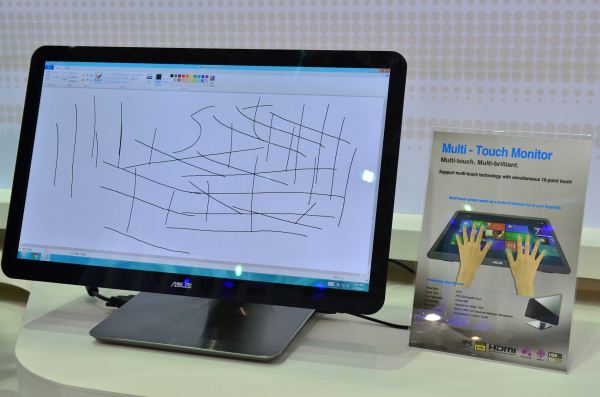

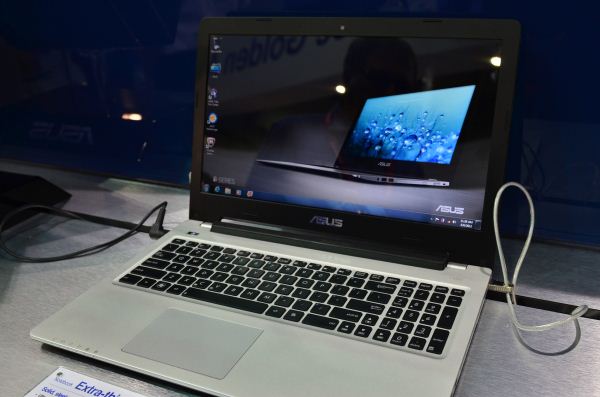


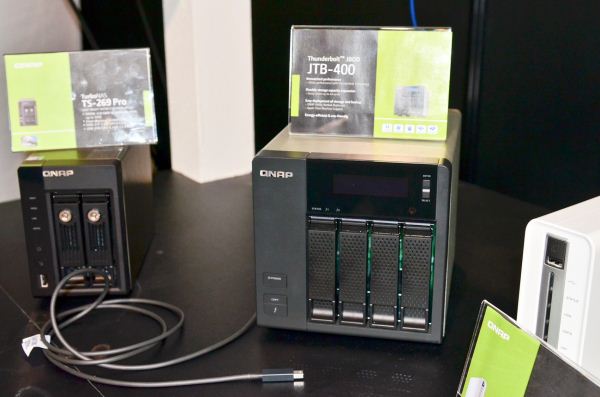
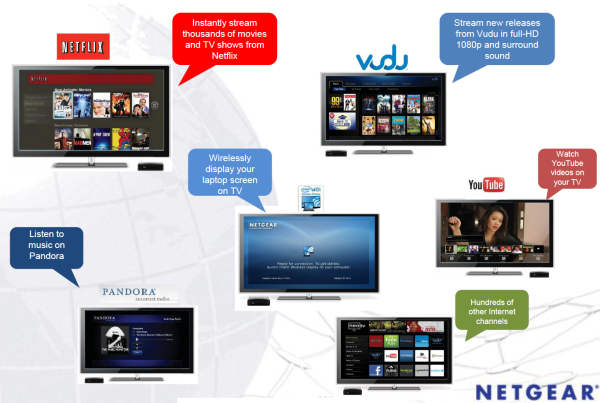
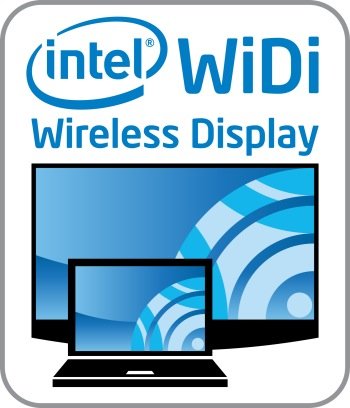

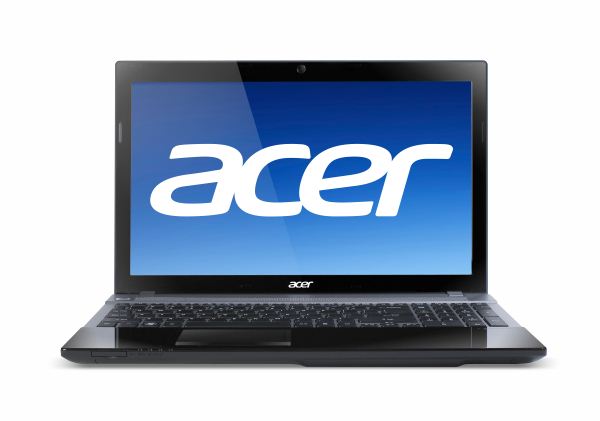
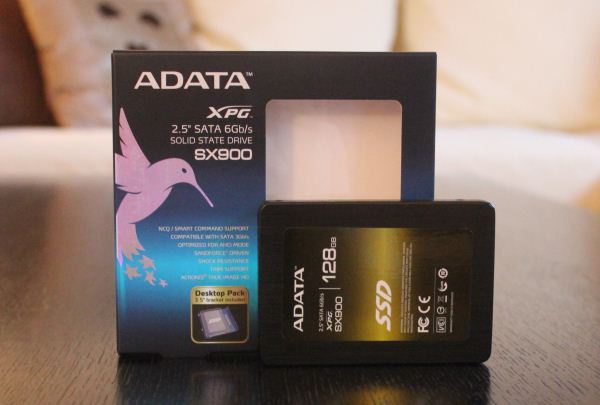
_575px.jpg)



























Bookmarks